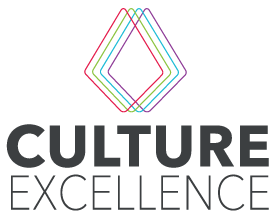Case Study: Cargill
How to build a new team, virtually
Cargill brings food, agricultural, financial and industrial products to people who need them all around the world. Today, Cargill serves customers and communities in 70 countries/regions, with 155,000 employees working every day to nourish the world in a safe, responsible, sustainable way.
Culture Excellence has been working with Cargill since 2020, assessing their safety and quality culture across the company’s many global sites.
Like many organisations, Cargill faced the challenge of working increasingly remotely during the Covid pandemic. In this case study, Haydn Mann, Asia and Europe Technical Director, shares his top tips of how to build a successful team virtually.
Knowing me knowing you
Once the pandemic hit, Haydn was tasked with establishing a team who had yet to work together, let alone meet. According to Haydn establishing team values before any of the work planned could be shared was essential. More importantly, given the diversity of the newly formed group, embracing and understanding cultural differences was key to developing a successful team dynamic from the outset.
Haydn noted that getting to know each other by sharing a bit of life (personal and professional) adds a human element to a distanced online world. Teams need to understand individual strengths and weaknesses as well as the different experiences and skills that members share between them. This helps the teams to fit together like a jigsaw and so, by asking genuine questions and showing genuine interest, the virtual connections can start developing trust. Occasionally, and in online meetings especially, it is very easy to multi-task and focus too much on the previous or upcoming meetings and so finding the right balance is important. If you are actively engaged in listening, then questions raised around a topic is interesting and rewarding for all present. Nevertheless, Haydn cautions that even while trying to genuinely understand more about everyone’s respective cultures, a level of candour can still easily be missing. It is much less comfortable to challenge people on a personal level online and teams have to work really hard to create an environment where openness is appreciated by all. Haydn advises to question whether you “trust someone first until you lose that trust because of bad behaviour, or do you distrust someone first instead?” This is often easy to decide in person, but can be difficult when contact is through a computer screen.
WhatsApp, WeChat and break-out rooms
To build a sense of community, different channels can be explored. Haydn’s team looked into the idea of using WhatsApp to share quick snippets of company news (e.g. plant X passed an audit, here’s the score etc.). But as it’s a platform not supported in China, WeChat became the preferred application for all instead. These workarounds are often necessary in global teams.
Another point to consider is that trust generally happens between meetings (through dialogue and social interaction), so it is important to arrange virtual break-out sessions for coffee and lunches as it gives teams an opportunity to vent frustrations, catch up or simply talk about the weather. Relationships, as well as trust, usually develop in the real not virtual world and so getting to know each other better is always beneficial, allowing the group to mature, and the dynamic to become more powerful.
Planning virtual meetings is also key. Haydn’s team, prior to every virtual meeting, shares an outline agenda so that everyone comes to the meeting prepared. The teams also plan the meetings in advance ensuring that only those that are needed are invited to join. Those not invited know that they had been left out for a deliberate reason and so it was ok not to be present.
Time zones can also prove to be an issue on occasions and so holding meetings that work for teams across the globe, or when that’s not possible taking turns in who’s inconvenienced makes it fair. Having a better balance and flexibility, as well as planning meetings in advance, means they are less likely to get knocked out of the calendar and builds an inclusive environment for a diverse team. Video functions are also highly beneficial with engagement and for putting faces to names. Plus, being able to read body language is useful and it certainly discourages multi-tasking!
Having clear goals and embracing transparency
As the group move forward, Haydn remarked that they often asked themselves if they are functioning in the right areas. The team believes it is important to be certain about how they are adding value and they see their role as one of coaching, mentoring, using knowledge and sharing insight. Members also work really hard to encourage operational and technical teams to look at systems being developed at the business and to embrace the notion of adding value instead of just ticking a box in the compliance audit. Throughout the process, sharing goals as well as failures and ensuring that the same messages are cascaded throughout the business, incorporated into metrics, and talked about in presentations, are also highly important.
Key tips from Haydn:
• Always make sure “WHY” is part of every single communication; develops a sense of purpose and clarity;
• Create common goals and continue to question the value;
• Continue to create spaces for teams to be authentic and for individuals to be themselves;
• Build in virtual breaks and informal ‘getting to know you’ lunches;
• Celebrate personal accomplishments;
• STOP multi-tasking and ask genuine questions – listen and encourage answers;
• Always keep communicating and adapt to the feedback you’re given;
• Understand your meeting agenda and reflect this in who you invite and why;
• Show you really care and always value teamwork and effort.
Reference: Campden BRI (2020), Culture Excellence 6th Annual Seminar


